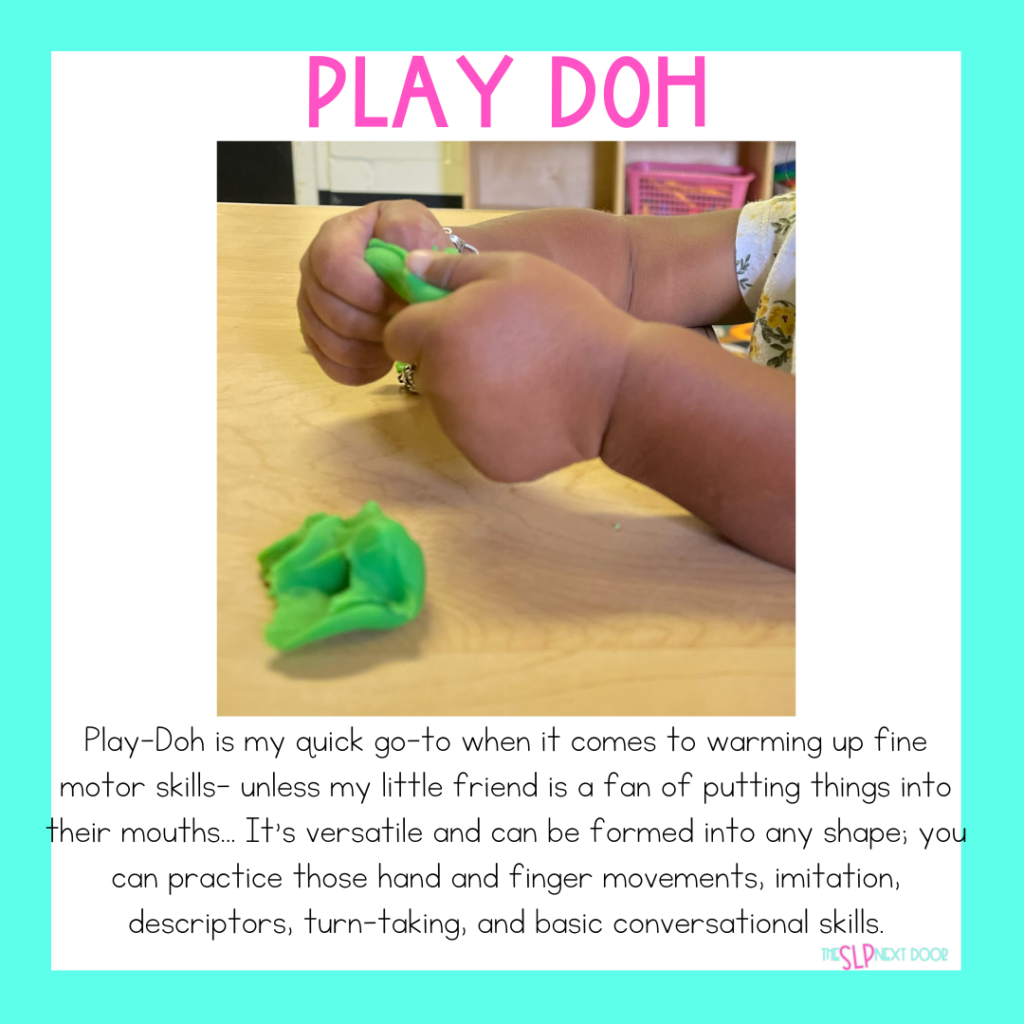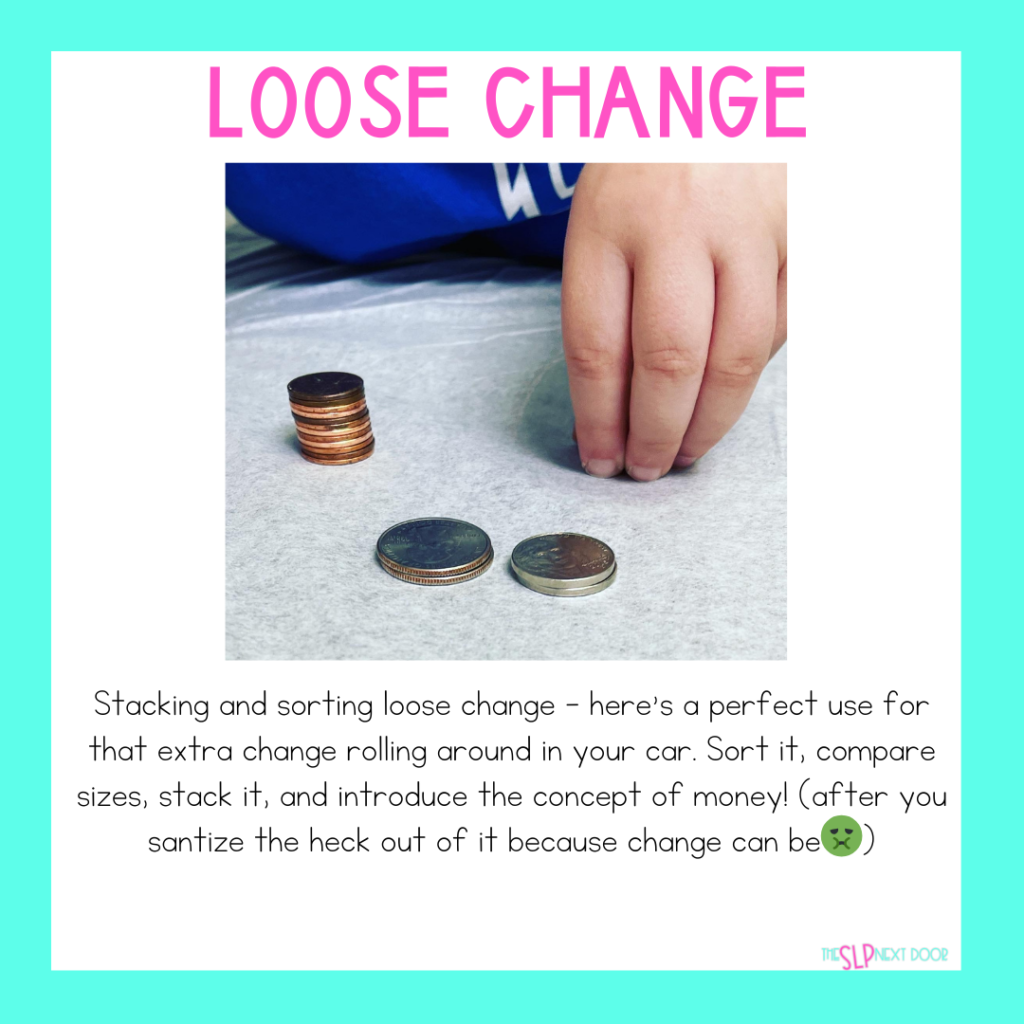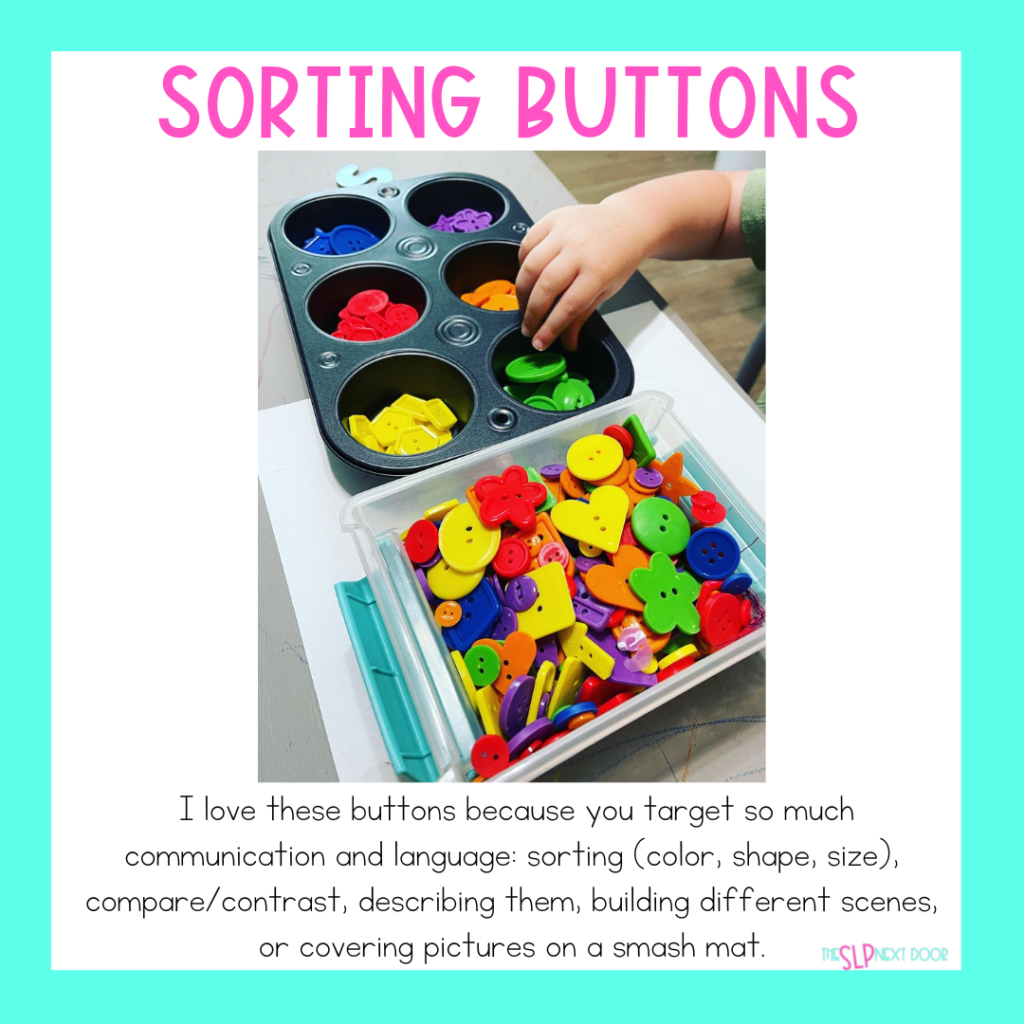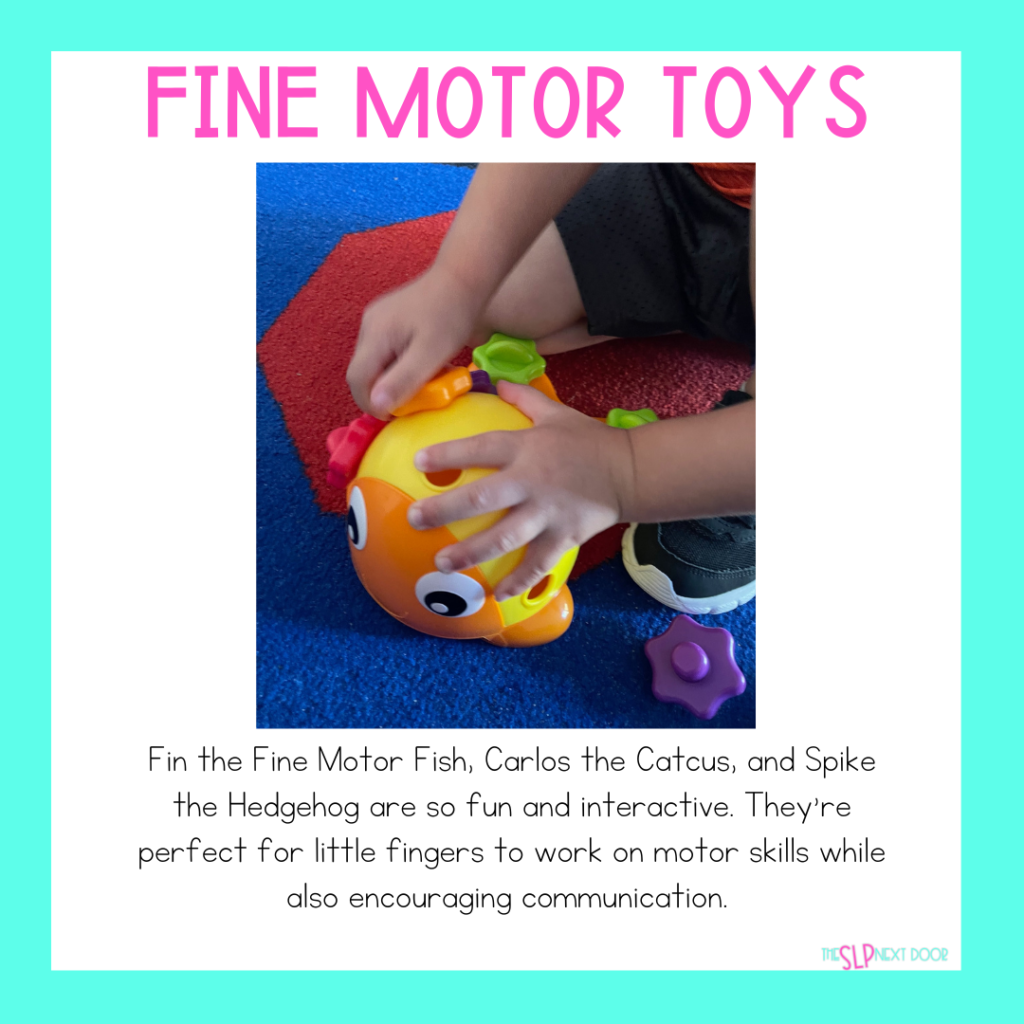One of my favorite concepts to target in speech therapy for toddlers is fine motor skills. And here’s why you should too!
A quick note before we get this party started: this post includes some pictures and examples of fine motor toys and other activities, so it’s a little longer of a scroll than my typical blog posts.
What are fine motor skills?
Fine motor skills are the movements of the small muscles in your hands, fingers, feet, and toes. Fine motor skills include coordination of muscles, joints, and nerves. They are essential for many everyday tasks.
Fine Motor and Language Development
This study from 2018 found that children with better fine motor skills in early development had better expressive language scores at 3 years. (The Informed SLP does a fantastic job of breaking this study down). In typical development, all skills work together, and the more precise and fine-tuned they become (over time), the more improvement you see in a child’s overall abilities, including their speech and language development.
Consider just how different a one-day-old infant is compared to a six-month-old, two-year-old, or even a four-year-old vs. a ten-year-old! There are major differences because of development.
These same ideas can be applied to speech sound and word production. Speaking requires so. much. coordination and precision. So you can imagine that when a motor skill is delayed, it could definitely cause issues in other areas (after all, speaking is a motor skill).
Fine Motor Activities
As SLPs, how do we help? We provide opportunities to encourage motor skills in our activities. I’ve realized that, just like with language, you can turn just about anything into a fine motor activity.
Here are 4 ways to incorporate fine motor into your speech therapy sessions:
Play-Doh
Play-doh is typically my quick go-to when it comes to warming up those fine motor skills (unless my little friend is a fan of putting things into their mouths) It’s versatile and can be formed into any shape; you can practice those hand and finger movements, imitation, descriptors, turn-taking, and basic conversational skills. Modeling clay is another option; it doesn’t dry out as quickly and often requires more strength to manipulate in little hands. Modeling clay is also cheaper.

Stacking Activities
Stacking blocks, pillows, cups, or coins… building and stacking objects encourages coordination, motor development, and language (hello, exclamatory words!).

You know what they say: Anything can be therapy! Even that loose change rolling around your car. If you find yourself in a scenario and need a backup plan, COINS! This is not recommended for children who put objects into their mouths, and I would sanitize them, but it works!
Sorting Activities
I found the buttons in the picture at Walmart! I love them buttons because you target so much communication and language: sorting (color, shape, size), compare/contrast, describing them, building different scenes, or covering pictures on a smash mat.
Muffin tins and mini-objects (buttons, pom-poms) are great for grasping and fine motor activities. You can take it up a notch by adding kid tweezers!

As for language development, there are a ton of language concepts to target with sorting tasks! Categorizing, describing, expanding utterances, labeling, answering and asking questions, compare and contrast… just to name a few.
Fine Motor Toys
Learning Resources has an incredible inventory of toys that target fine motor development (and are also fantastic for targeting language and communication). Full disclosure: the links posted are affiliate links; these will not impact your price, but pay me a small commission for sales.

Finn, the Fine Motor Fish is one of my go-to’s for targeting fine motor skills and language development. It’s basically the hedgehog but smaller pieces. Finn’s pieces (as you can see in the photo) are shorter.

Other fine motor toys that also encourage communication:
Carlos the Cactus

Spike the Hedgehog

Pedro the Peacock

Stacking Pegs

Smart Stages Piggy Bank

Magnetic Tiles

Nuts & Bolts

Incorporating fine motor activities into your speech sessions really makes a difference in a child’s development. Plus, adding a fine motor activity to your speech therapy for toddlers is really simple!
You can find more information on the importance of fine motor skills and other fine motor activities in my handbook: Communicate & Connect- Chapter 4!
You can snag your copy below 👇



